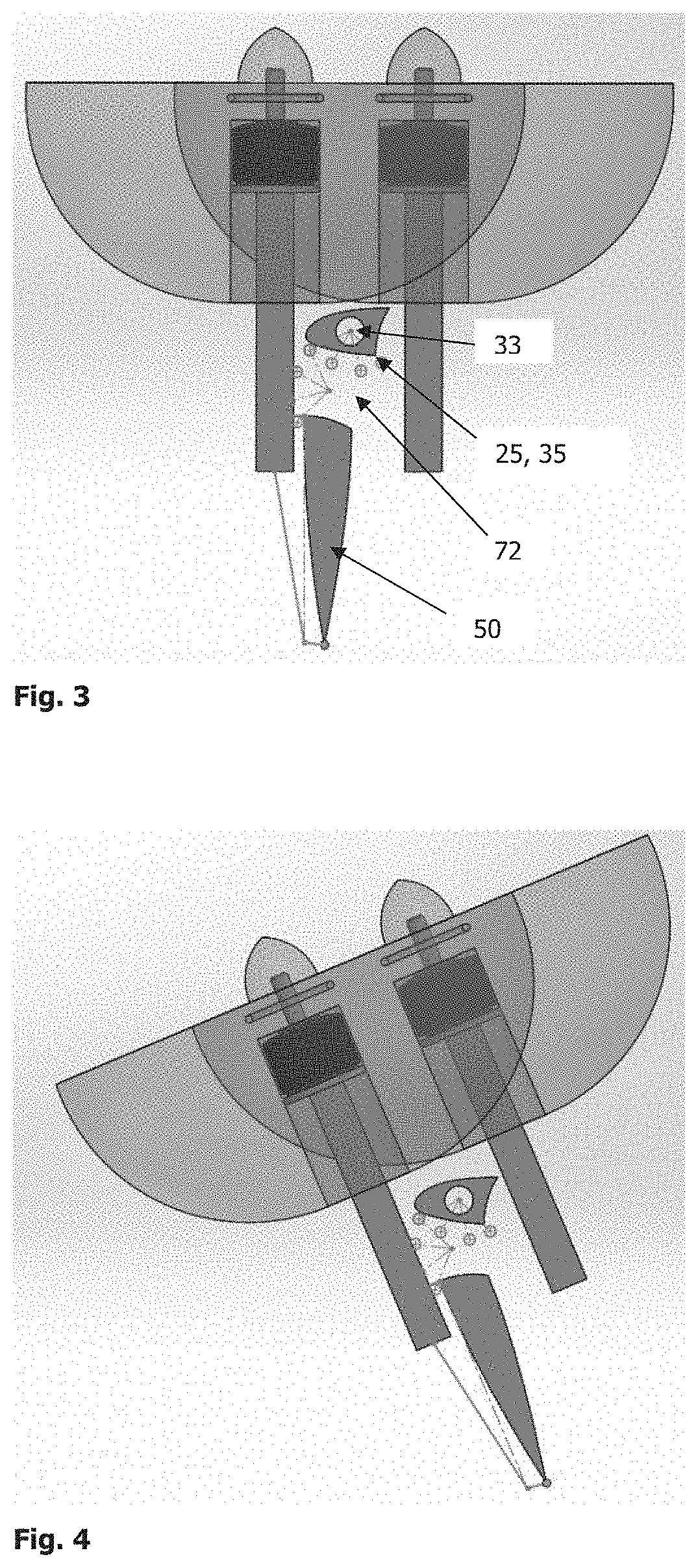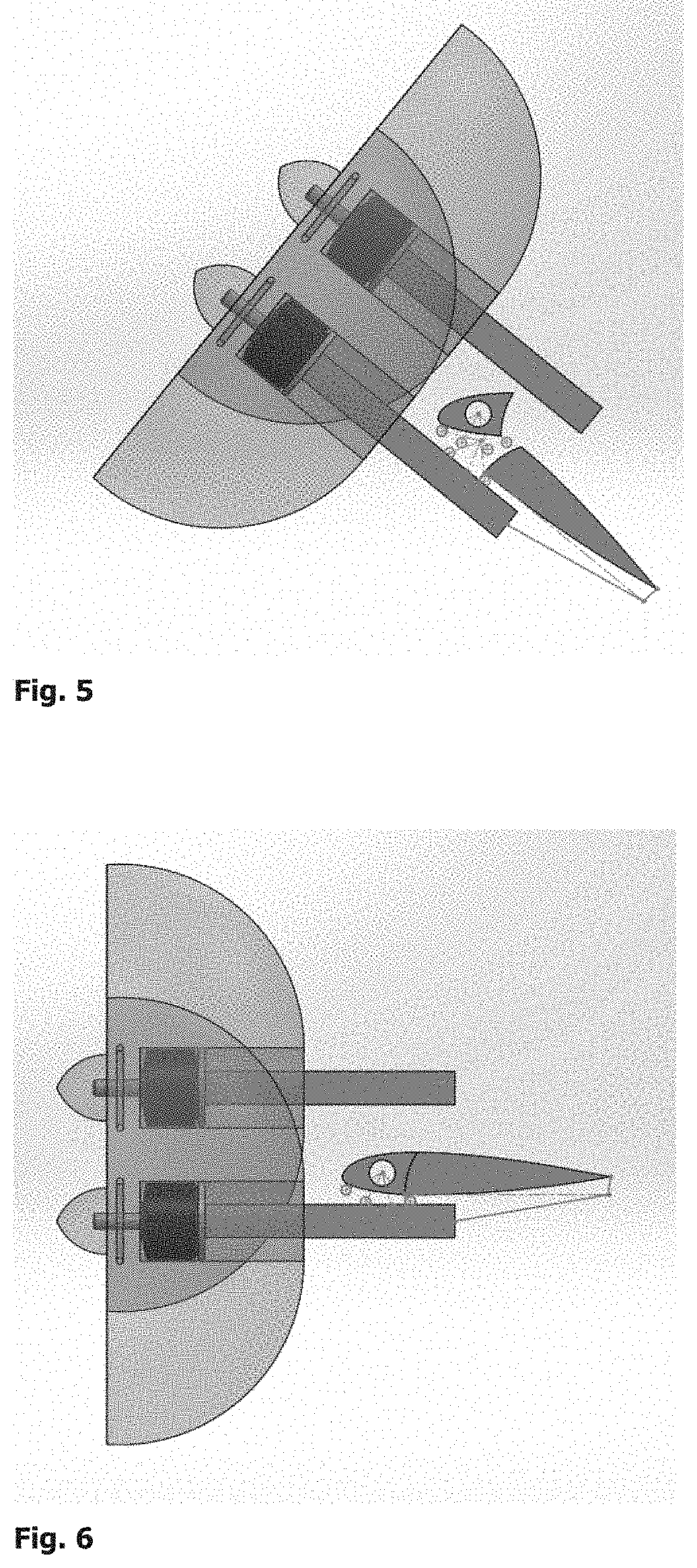Wing tilt actuation system for electric vertical take-off and landing (VTOL) aircraft
a technology of electric vertical take-off and landing and actuation system, which is applied in the direction of vertical landing/take-off aircraft, efficient propulsion technology, airflow influencers, etc., can solve the problems of increasing the weight and manufacture cost of helicopters, critical rotor design, and generally limited to relatively low flight speeds
- Summary
- Abstract
- Description
- Claims
- Application Information
AI Technical Summary
Benefits of technology
Problems solved by technology
Method used
Image
Examples
Embodiment Construction
[0072]A vertical take-off and landing (VTOL) aircraft 10 is disclosed. In the preferred embodiment, as depicted in the drawings, there are two pairs of wings. Namely, the forward wings 20, 22 and the rearward wings 30, 32, Each of the forward wings 20, 22 is attached to a laterally opposing region of the fuselage 24. Similarly, each of the rearward wings 30, 32 is attached to a laterally opposing region of the fuselage 24. In the embodiment shown in the drawings, the aircraft 10 is depicted as a single seat or double seat aircraft 10. However, larger multi-person embodiments are also envisaged. The aircraft 10 may be controlled from within by a pilot, or alternatively it may be remotely controlled.
[0073]In the embodiment shown in the drawings, distal portions of the forward wings 20, 22 and the rearward wings 30, 32 are connected with connecting members or webs 42, such that the two pairs of wings 20, 22, 30, 32 define a boxed wing or closed wing structure.
[0074]In another embodimen...
PUM
 Login to view more
Login to view more Abstract
Description
Claims
Application Information
 Login to view more
Login to view more - R&D Engineer
- R&D Manager
- IP Professional
- Industry Leading Data Capabilities
- Powerful AI technology
- Patent DNA Extraction
Browse by: Latest US Patents, China's latest patents, Technical Efficacy Thesaurus, Application Domain, Technology Topic.
© 2024 PatSnap. All rights reserved.Legal|Privacy policy|Modern Slavery Act Transparency Statement|Sitemap



